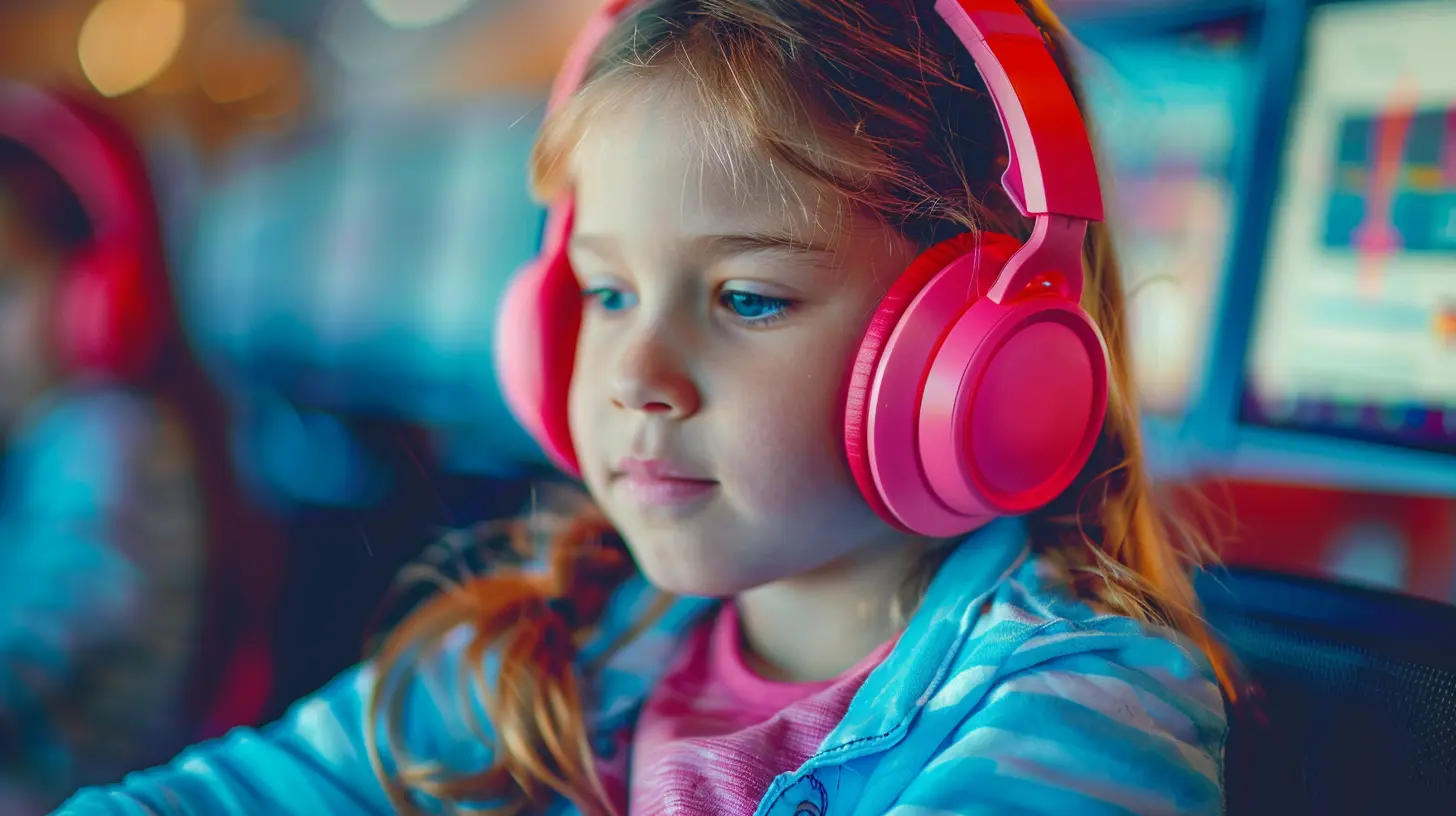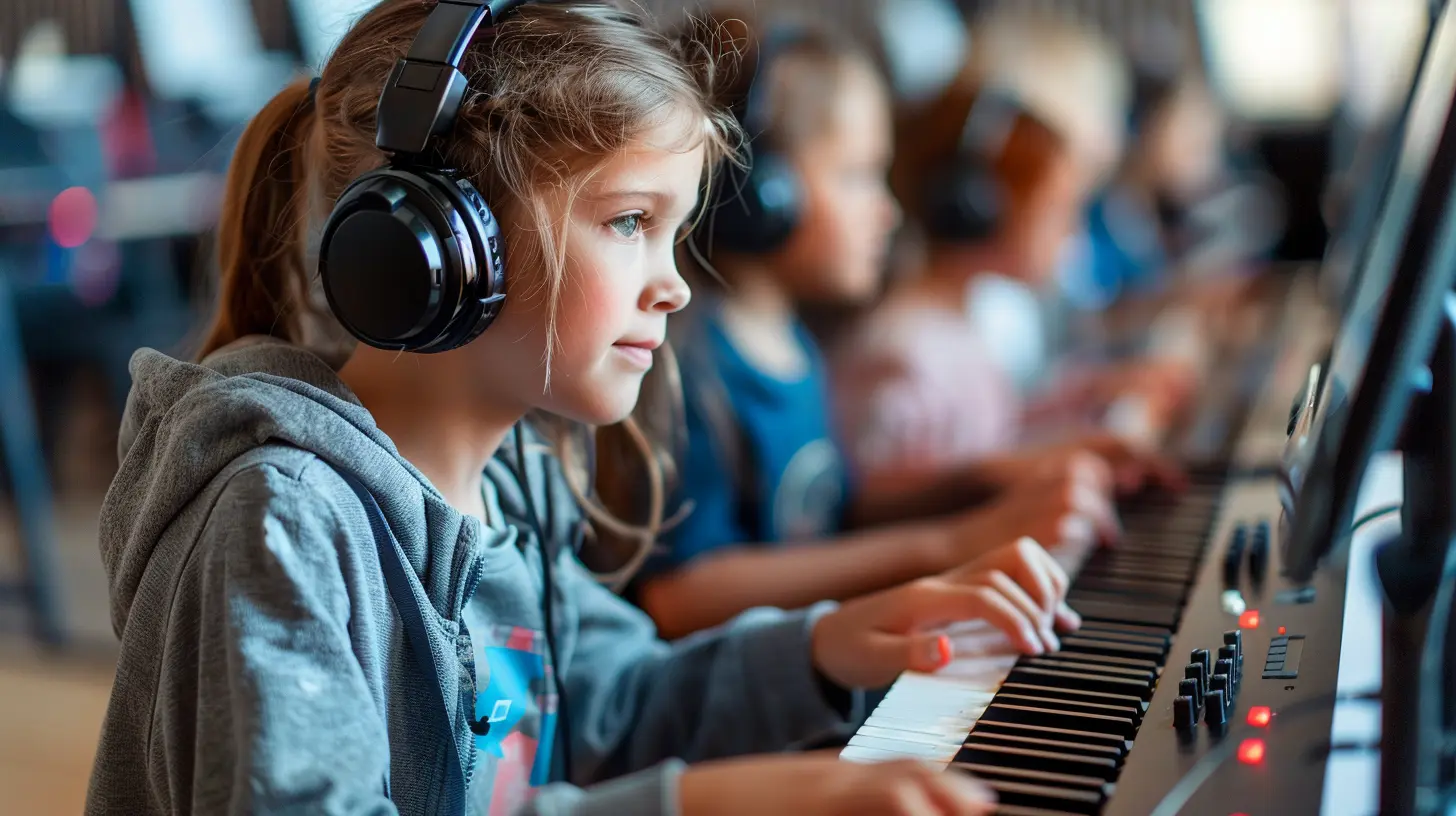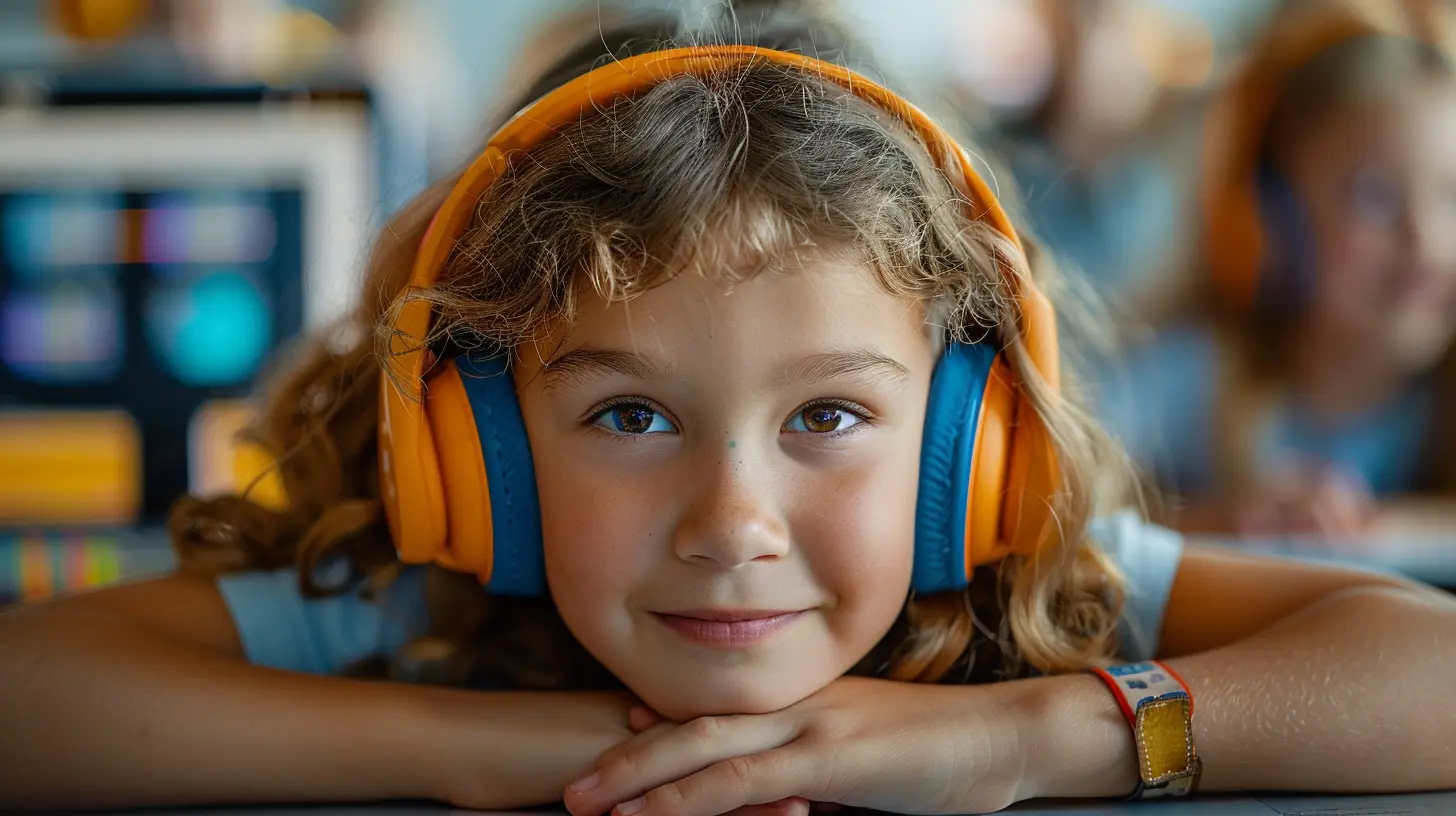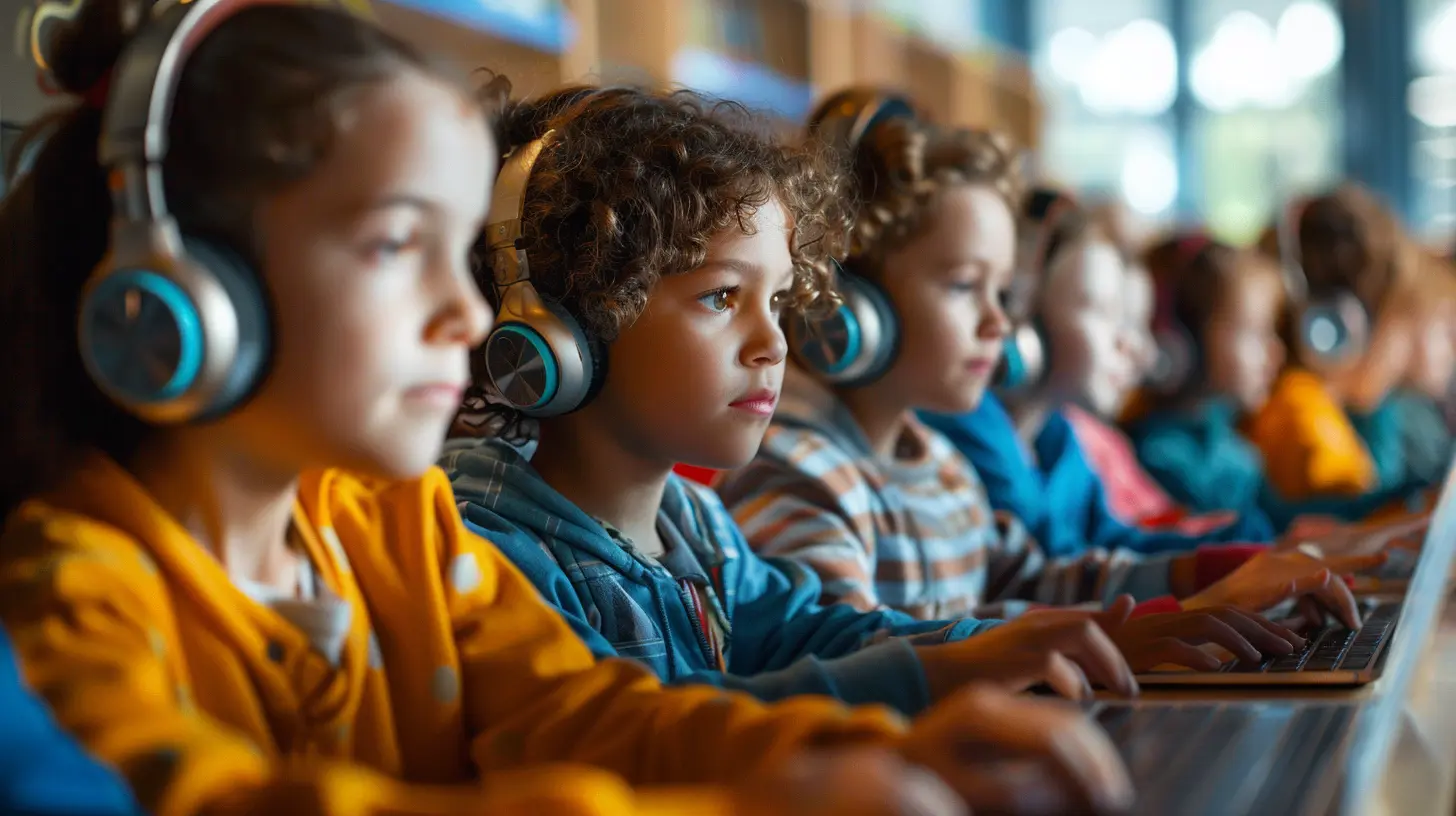Integrating Technology into Music Classrooms
24 June 2025
Technology has completely reshaped how we live, work, and even how we make music. From streaming services to music production software, tech is everywhere. But here's a question—if technology is transforming the music industry, shouldn't it also be transforming music education?
If you're a music teacher, you might be wondering how to bring your classroom into the 21st century without losing the soul of what you do. And if you’re a student or parent, you might be curious how tech tools can improve learning and creativity. The good news? Integrating technology into music classrooms isn’t just a trend—it’s a game-changer.
In this article, we’re digging into how you can weave tech into your music classes without turning them into a computer lab. We’ll look at real tools, real strategies, and real examples that can help bring your music lessons to life.
Why Technology Belongs in Music Classrooms
Let’s start with the big “why.” Why even consider tech in a space that thrives on creativity, emotion, and human expression?1. Engages Digital-Native Students
Let’s face it—today’s students are digital natives. They’ve grown up with smartphones, tablets, and TikTok. Tech is their language. When you integrate tools they already use, you're speaking their language too. It makes learning feel less like school and more like something they want to do.2. Expands Musical Horizons
Technology doesn’t just make things easier—it opens up new musical worlds. Students can explore instruments they’ve never touched, styles they’ve never heard, and musical cultures from across the globe.Think about it: apps like GarageBand or Soundtrap let kids compose full tracks, even if they've never held a guitar or sat at a piano.
3. Provides Instant Feedback and Personalization
Want to know one reason students get frustrated with traditional music classes? Feedback takes time. With the right tech, students can get instant feedback on pitch, rhythm, and even performance style. It’s like having a private tutor on standby.
Building a Tech-Integrated Music Classroom: Where to Start
It’s easy to get overwhelmed with all the tools and apps out there. So let’s simplify. Here’s how to start integrating tech into your music classroom without going nuts.1. Set Clear Goals
Before diving headfirst into the app store, ask yourself: What do I want my students to achieve? Are you focusing on composition? Performance? Music theory? Synchronizing tech with your goals keeps things practical and avoids shiny-object syndrome.2. Evaluate Your Resources
You don’t need a state-of-the-art studio setup. Many classrooms make magic happen with just a few tablets or Chromebooks. Apps like Noteflight and Chrome Music Lab can run in a browser and require no fancy equipment.3. Start Small
You don’t have to flip your entire curriculum overnight. Start with one tech tool for one lesson. Maybe it’s using an app to analyze rhythm patterns or letting students compose a short melody with a digital piano. Once you’re comfortable, expand.
Must-Have Tech Tools for Music Classrooms
Now for the fun part—what tools should you actually use? Here are some of the crowd-favorites that bring real value to classrooms.1. DAWs (Digital Audio Workstations)
Platforms like GarageBand (iOS/macOS), Soundtrap (web-based), and BandLab (Android/iOS/web) are user-friendly gateways into music production. Students can layer loops, record vocals, and even collaborate online with classmates.> Bonus: With DAWs, even shy students who don't enjoy performing live can still express themselves creatively.
2. Notation and Composition Software
Programs like Noteflight and Flat.io allow students to write music on a digital staff and hear it played back instantly. No more wondering how that melody will sound—it’s right there, ready to tweak and perfect.3. Practice and Feedback Apps
Yousician and SmartMusic are two popular apps that offer interactive lessons and immediate feedback. These tools are especially helpful for individualized learning. Students can practice at their own pace while the app tracks their progress.4. Rhythm and Ear Training Tools
Apps like Tenuto or Rhythm Trainer focus on building core skills like interval recognition, timing, and notation reading. They’re perfect for bite-sized practice sessions that feel more like a game than homework.5. Interactive Whiteboards and Tablets
Using tech like SMART Boards or iPads can turn passive lessons into dynamic experiences. Want to break down a Beethoven symphony? Annotate it as a class while listening. Exploring world instruments? Swipe through pictures, sounds, and videos in real-time.
Creative Tech Ideas for Music Educators
Looking to spice things up? Here are a few creative ways to use tech that go beyond the usual drill-and-practice format.1. Virtual Jam Sessions
Use platforms like Soundtrap or BandLab to let students collaborate remotely. They can create tracks together from different homes (or even different countries). It’s a modern twist on the school band.2. Video Projects and Music Videos
Let students turn their compositions into music videos using iMovie or Adobe Express. They’ll learn about pacing, storytelling, and syncing visuals to audio—all valuable multimedia skills.3. Podcasting as a Music History Project
Have students research a composer or genre and create a podcast episode using tools like Anchor. Writing the script, recording narration, and mixing in music deepens both understanding and engagement.4. QR Code Listening Stations
Set up different stations around the classroom with QR codes linked to specific music clips or interactive activities. Students walk around, scan, listen, and reflect. It’s like a mini museum—with headphones.Challenges of Using Technology in Music Classrooms
Okay, so it's not all sunshine and symphonies. Let’s talk about the hurdles you might run into.1. Budget Constraints
Getting new gear can be expensive. But many apps offer free tiers, and grants for instructional technology are out there if you’re willing to look. Crowd-sourced funding, school district programs, or nonprofit grants can help.2. Tech Burnout or Overwhelm
Too much screen time? It’s a real concern. Balance is key. Not every lesson has to involve a gadget. Use tech to enhance—not replace—the human element of music-making.3. Unequal Access
Not all students have the same devices at home. Focus on tools that are web-based and free whenever possible, and make sure you're offering offline alternatives when needed.The Role of the Teacher in Tech-Enhanced Classrooms
Sometimes teachers worry that technology will make them obsolete. But here’s the truth: tech can never replace a great music teacher—it just gives you more tools in your tool belt.Your role shifts slightly—from gatekeeper of knowledge to guide and facilitator. You become the one who helps students interpret, reflect, and make connections. And honestly? That’s the good stuff.
Be the Curator
There are a million apps out there. Your job is to find the ones that actually align with your teaching goals—and toss the rest.Be the Coach
Technology gives instant feedback, but students still need help interpreting that feedback and turning it into improvement. That’s where you come in.Be the Connector
Use tech to link what students do in class with their lives outside. Show them how scales relate to guitar solos, or how rhythm patterns show up in hip-hop beats.The Future of Tech in Music Education
So what does the future hold?We’re already seeing virtual reality experiences where students can “sit in” with an orchestra or conduct a digital ensemble. AI is creating smart instruments that adapt to the player’s skill level. And machine learning is being used to compose music in real-time.
But even with all these whiz-bang features, the heart of music education remains the same: expression, connection, and growth. Tech just helps widen the stage.
Wrapping It Up
Integrating technology into music classrooms isn’t about transforming students into robots who churn out songs. It’s about giving them new ways to express themselves, connect with music, and grow as learners and creators.Whether you’re using a full DAW setup or just a smartphone and some earbuds, the key is intentionality. Choose tools that serve your students’ needs and your teaching goals—and don’t be afraid to experiment.
Technology, when used thoughtfully, doesn’t take away the magic of music. It amplifies it.
all images in this post were generated using AI tools
Category:
Music EducationAuthor:

Eva Barker
Discussion
rate this article
2 comments
Arwenia Simon
In the heart of music’s embrace, Technology dances, finding its place. A symphony of sound, wires intertwine, Where rhythms and pixels elegantly align. With every note, innovation sings, Expanding horizons, transforming springs. In classrooms bright, the future’s song, Together we’ll create, where all belong.
November 18, 2025 at 1:20 PM

Eva Barker
Thank you for beautifully capturing the synergy between music and technology! Your words highlight the transformative potential of integrating these elements in classrooms.
Patricia Williams
Great insights! Integrating technology can truly enhance creativity and engagement in music education.
June 29, 2025 at 3:31 AM

Eva Barker
Thank you! I'm glad you found the insights valuable. Technology indeed has the potential to transform music education!


